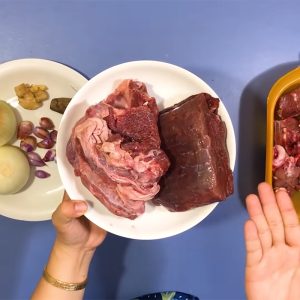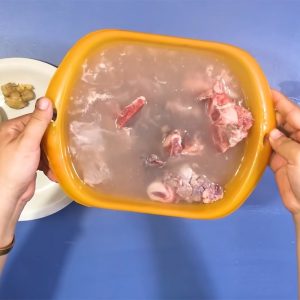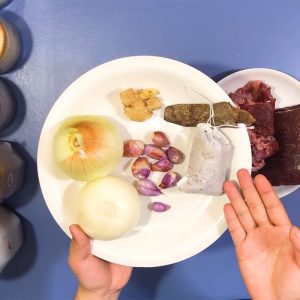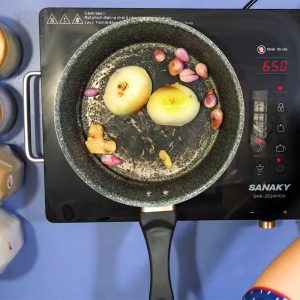Phở bò (Beef Pho)
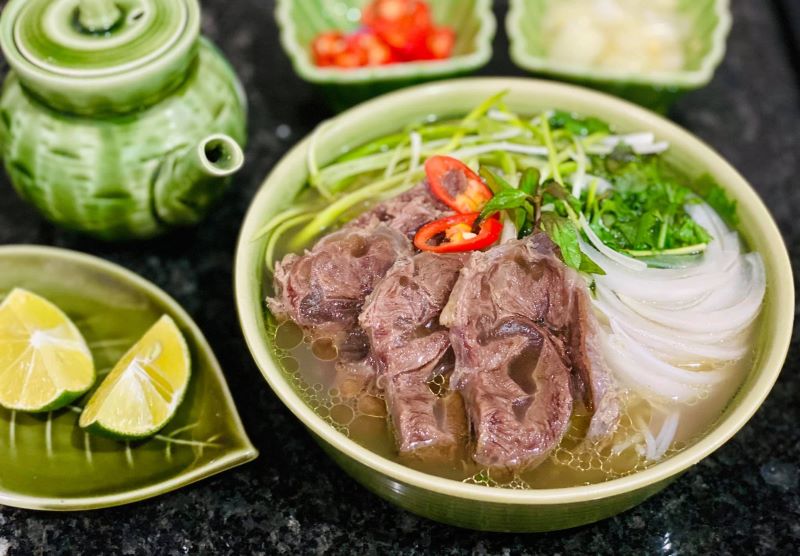
Ingredients
Broth Base
-
2kg beef marrow bones (xương ống bò – blanched and simmered 6–12 hours)
-
1 whole ginger root (grilled and smashed)
-
6 shallots + 3 large onions (grilled or charred for broth)
-
200g rock sugar (đường phèn – for natural sweetness)
-
1 pack phở spice mix (includes star anise, cinnamon, cardamom, cloves, coriander seeds, etc.)
-
Salt, seasoning powder (hạt nêm), and MSG to taste
Meat Toppings
-
1kg beef tenderloin (thăn bò – thinly sliced for topping)
-
1kg beef brisket or flank (nạm bò – simmered and sliced)
Noodles & Garnish
-
Fresh rice noodles (bánh phở – blanched)
-
5 scallions (chopped)
-
Fresh herbs (optional: Thai basil, cilantro, sawtooth herb, bean sprouts, lime wedges, chili)
Nutritional Information
For: Omnivores
Calories per serving: ~ 450–550 kcal (per large bowl with full toppings)
Key Nutrients
1. Lean Protein (30–35g)
- Source: Beef (thăn + nạm)
- Benefits: Supports muscle repair, provides iron and zinc for immune health and energy levels.
2. Collagen & Minerals
- Source: Beef marrow bones (xương ống bò)
- Benefits: Promotes joint health, skin elasticity, and gut lining support. Bone broth also supplies calcium, magnesium, and phosphorus.
3. Healthy Carbs (40–50g)
- Source: Rice noodles (bánh phở)
- Benefits: Provides quick energy, gluten-free, and gentle on digestion.
4. Antioxidants & Phytochemicals
- Allicin (onion + shallot): Supports heart health and immune function
- Gingerol (ginger): Aids digestion and reduces inflammation
- Flavonoids (herbs like cilantro, basil): Help detoxify and support brain function
- Spices (star anise, cinnamon, cardamom…): Stimulate circulation and metabolism
5. Essential Minerals
- Iron & Zinc (beef): Help form red blood cells and regulate immune defense
- Calcium & Magnesium (bone broth): Important for bone strength and nerve balance
- Potassium (herbs + onion): Supports fluid balance and blood pressure regulation
1. Prepare and blanch the meat
- Rinse the beef bones and brisket thoroughly under water, then let them drain. Slice the brisket into thin, bite-sized strips about the length of three finger joints.
- Place the bones into a large bowl, pour boiling water over them until fully submerged, and blanch for 3–5 minutes to remove impurities and odor. Then take them out, rinse them thoroughly with clean water, and set aside.
2. Prepare the aromatics and other ingredients
- Peel and rinse the onions. Cut one onion in half for roasting later; thinly slice the other two.
- Peel the shallots and wash them along with the ginger and scallions. Chop the green parts of the scallions and quarter the white stems lengthwise.
- Place the halved onion, shallots, and ginger on a dry pan and roast over medium-low heat for 3–5 minutes until aromatic and slightly charred.
- Using the same pan, toast the pho spice mix (typically including star anise, cinnamon, coriander seeds, cloves, and cardamom) over medium heat for 4–6 minutes until fragrant. Transfer the toasted spices to a spice bag and tie it securely.
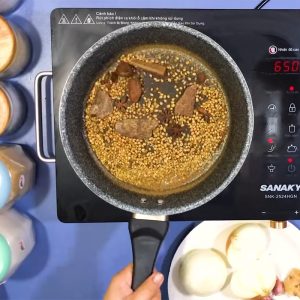
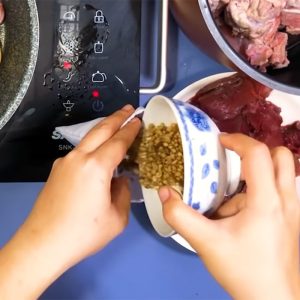
3. Cook the broth
- Place the blanched beef bones, brisket, the spice bag, and the roasted aromatics into a pressure cooker. Add water just enough to cover everything along with 1 teaspoon of salt. Close the lid and cook for 30 minutes until the beef is tender and the broth becomes naturally sweet.
- Once done, remove all solids. Slice the cooked brisket into bite-sized strips, again about three finger joints in length.
- Transfer the broth into a large pot to continue cooking over medium heat. Re-add the spice bag and season with 200g rock sugar, 2 tablespoons of seasoning powder, 1 teaspoon of salt, and 1/4 teaspoon of MSG (optional). Stir to combine.
- Let the broth simmer for 5–7 more minutes until it reaches a rolling boil. Taste and adjust the seasoning as needed. Remove the spice bag and keep the broth hot until serving.
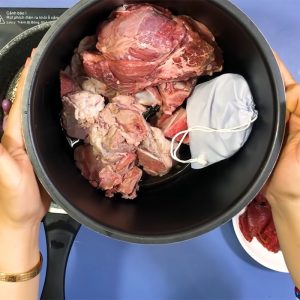
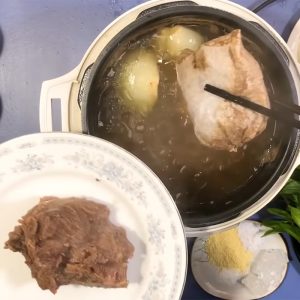
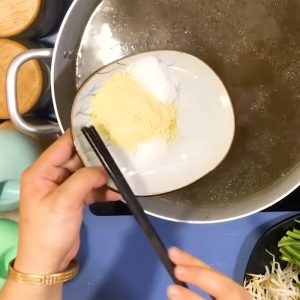
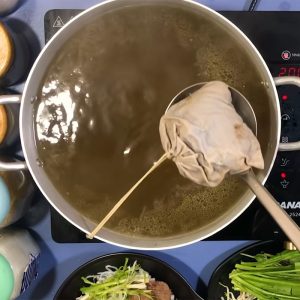
4. Final presentation
Your Vietnamese Beef Pho is ready! Place the rice noodles in a bowl, add sliced raw tenderloin (for rare beef), brisket slices, chopped scallions, onion slices, and white scallion stalks. Pour in the hot broth over the meat to gently cook it.
Top with a pinch of ground black pepper and serve with traditional garnishes such as Thai basil, sawtooth coriander, bean sprouts, lime wedges, and chili slices.
Enjoy with your family for a comforting and fragrant Vietnamese meal!
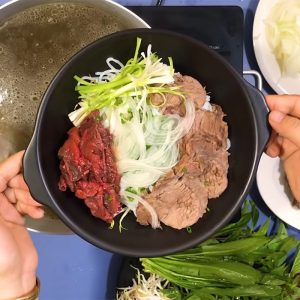
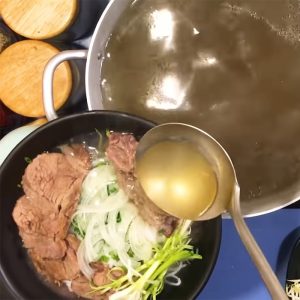
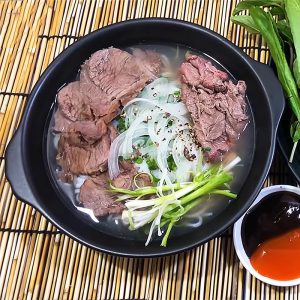
Beef Pho – The soul of Vietnamese cuisine in a bowl
Few dishes in the world evoke a sense of place, memory, and emotion quite like phở bò—Vietnamese beef noodle soup. To many Vietnamese people, phở is not just a meal, but a ritual, a comfort, and a proud symbol of cultural identity. Its aroma alone—rich with cinnamon, star anise, charred onion, and slow-simmered beef bones—has the power to transport someone back to the early morning bustle of street-side phở stalls or the quiet comfort of a home kitchen.
Originating in the north of Vietnam in the early 20th century, phở bò began as a humble dish sold by vendors carrying soup pots balanced on bamboo poles. Over time, it traveled southward and evolved in flavor, garnishes, and broth clarity, yet remained rooted in the same core: patience, balance, and love.

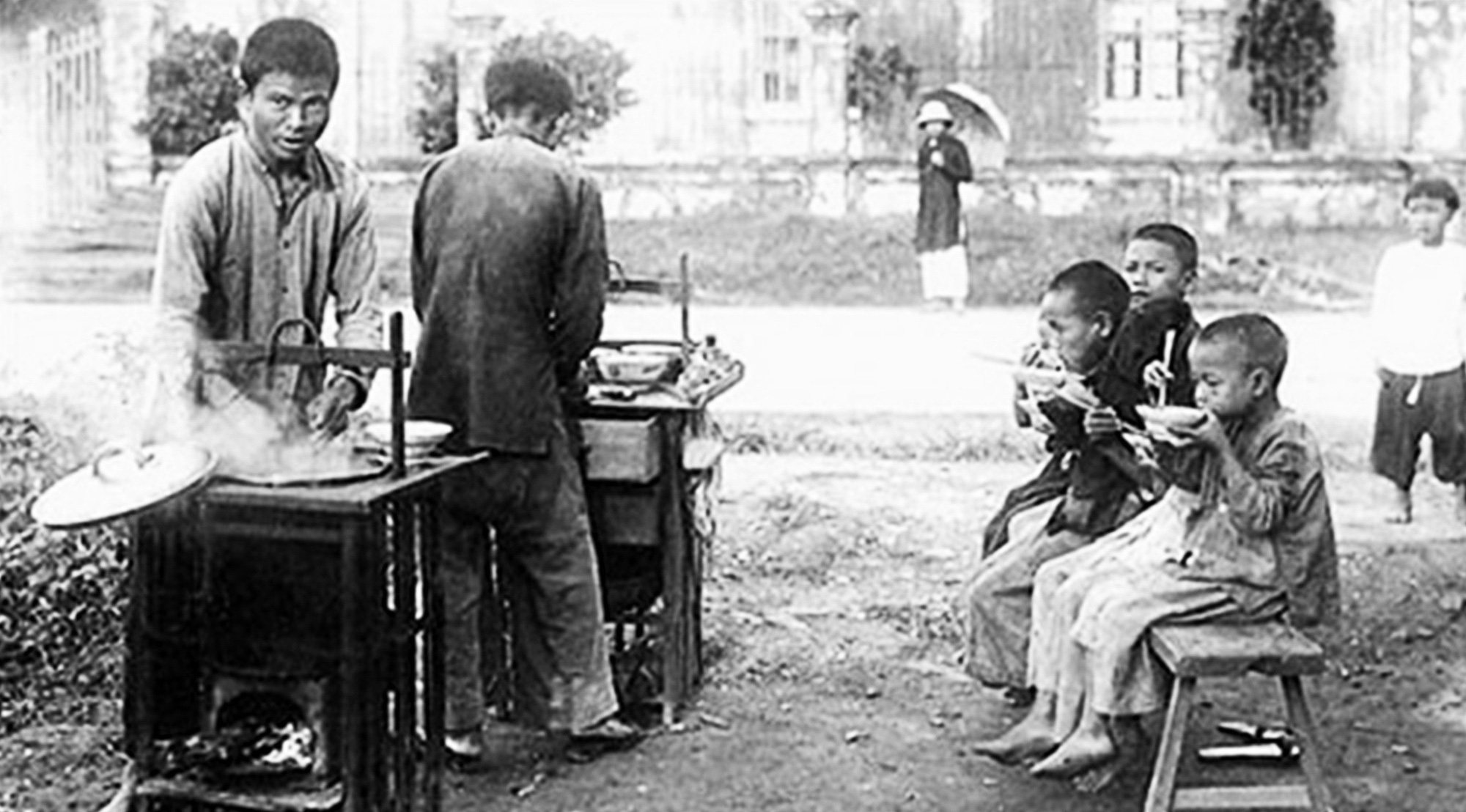
(The Pho Vendor – A Taste of Old Hanoi’s Memories)
In many Vietnamese households, phở bò is not just a breakfast staple—it’s a way of gathering. It brings the family together in the morning chill, with bowls steaming on the table and stories flowing as freely as the broth. It’s the kind of dish that tastes better the longer it simmers, not just on the stove, but in our memories.
What makes phở bò special is the care that goes into every step—from carefully blanching bones to create a clean base, to charring aromatics for depth, to layering spices so that the broth sings with subtlety. The noodles must be soft but not soggy, the beef tender but not overcooked, the herbs fresh and bright.
To cook phở is to understand restraint and generosity at once. It is not difficult, but it demands your time. And in return, it offers comfort, nourishment, and a deep connection to Vietnam’s rich culinary soul.
So as you make this dish, don’t just follow the steps—feel the rhythm. Let the scent of ginger and star anise fill your kitchen, and remember that you’re not just making soup. You’re making something timeless.
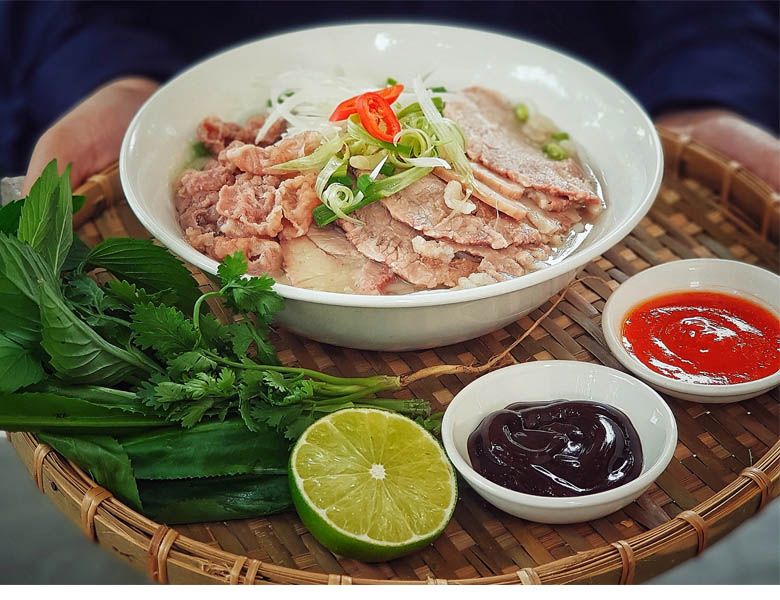
(Pho in Present-day Hanoi)
